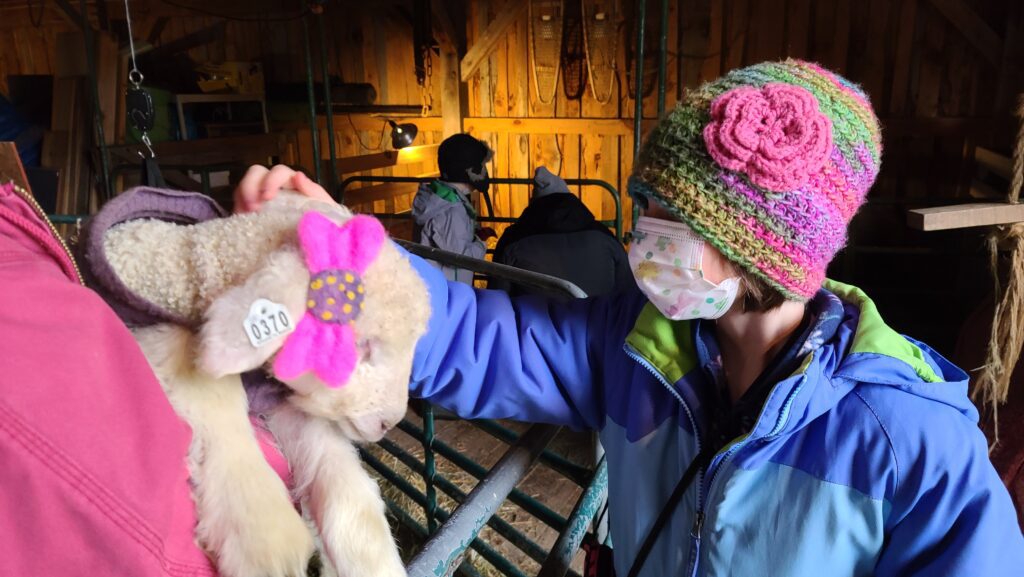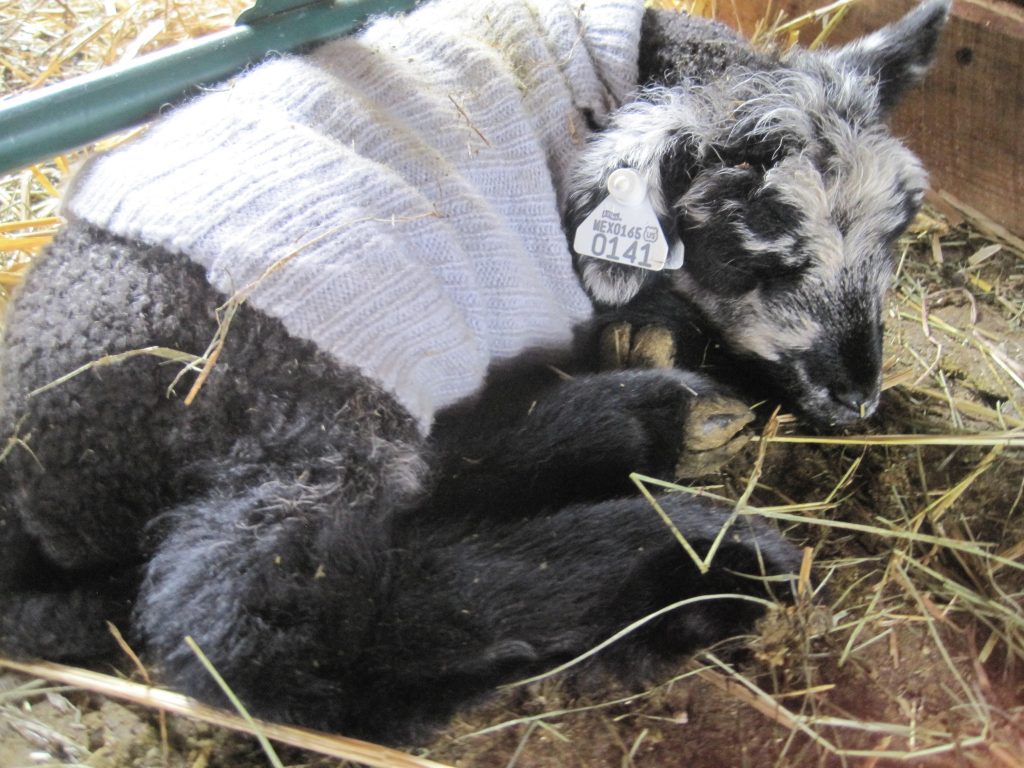The Sheep
We started our flock with Romney, Lincoln, and Corriedale sheep in 1997. Now we have introduced Finnsheep, for the softness of their wool, and Border Leicester Crosses, for the sheen and length of their wool. Our goal is to keep 20-30 breeding ewes and one resident ram. We choose our rams as dual purpose breeds to improve the quality of the fleeces. Our sheep are primarily bred for their fiber, which is soft and long with a variety of colors from white to silver gray to shades of brown.
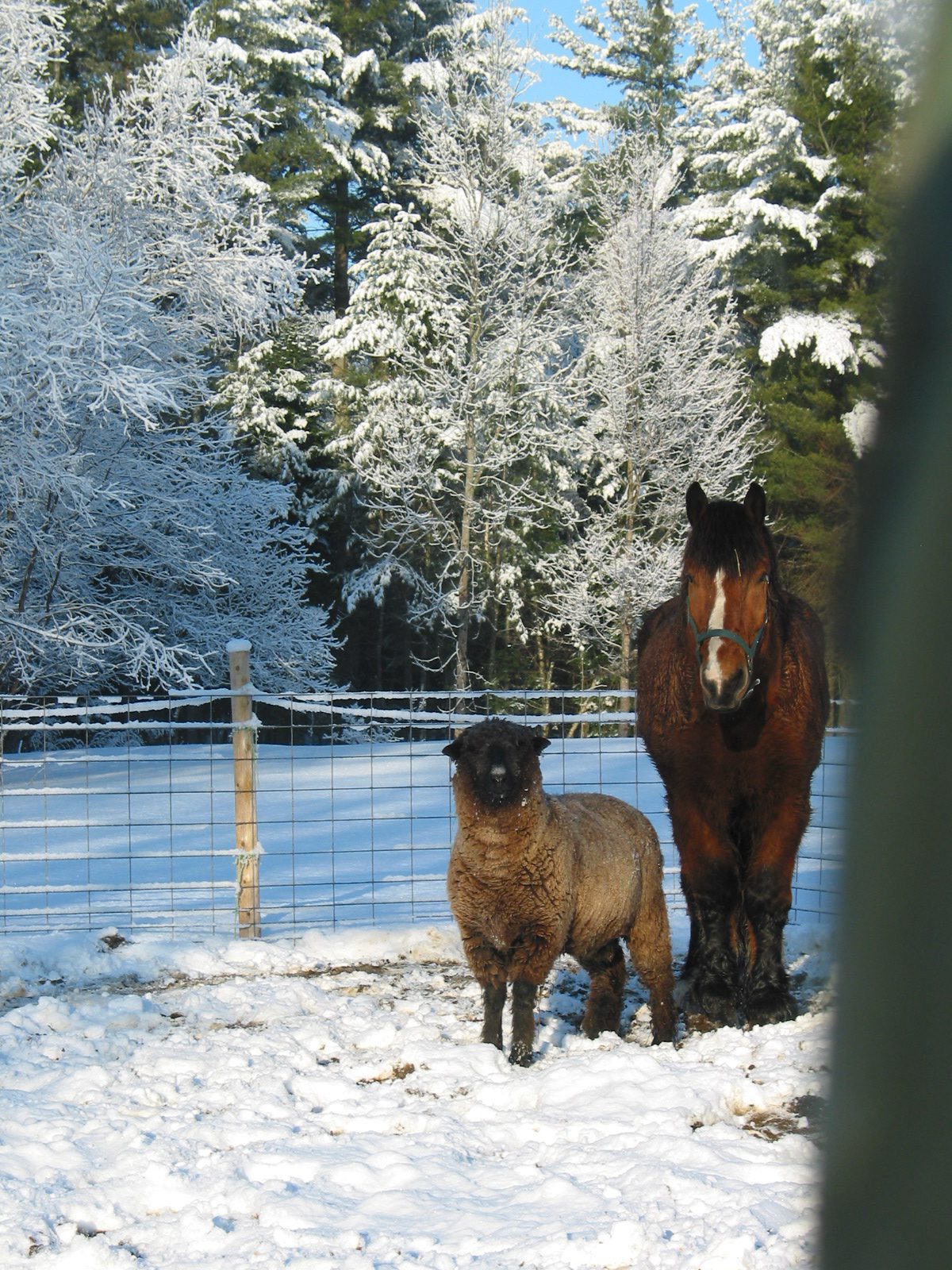
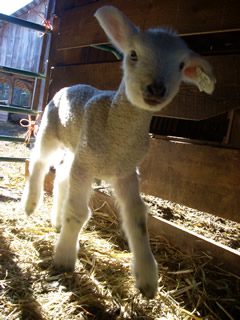
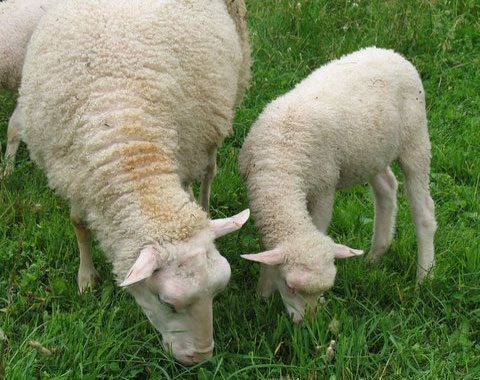
We are cutting back from about 12-15 lambs to 4-8 lambs each spring. It is fun to watch the lambs grow and frolic in the pastures.
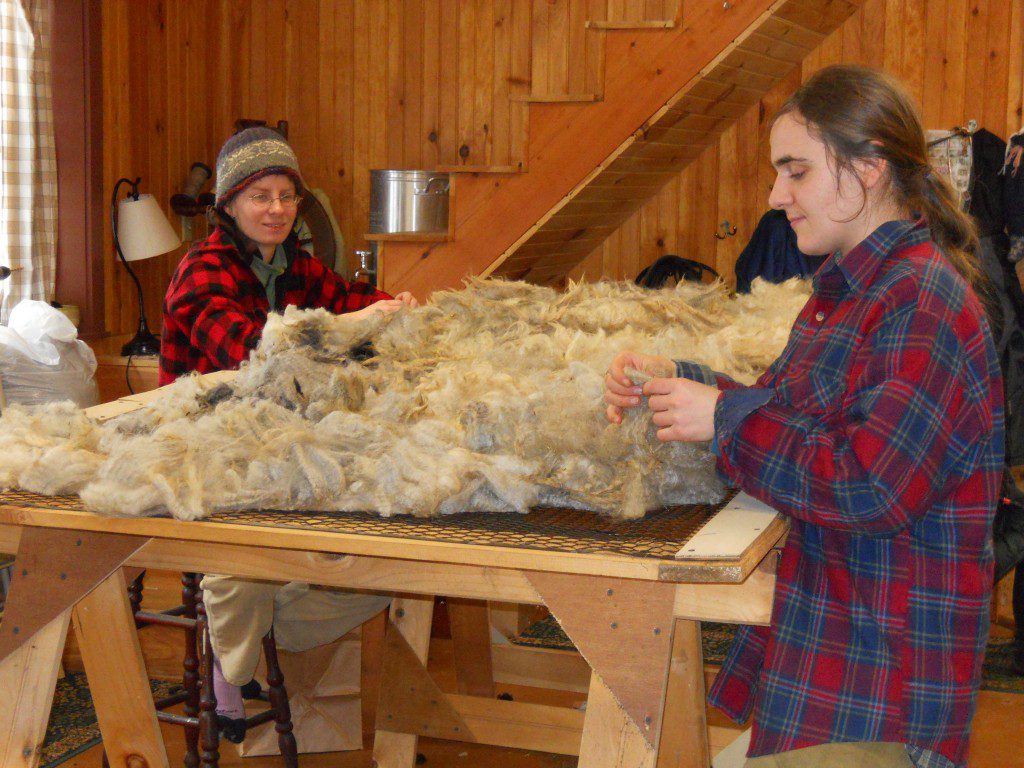
We spend time with lambs when they are very young so they will be friendly.
Our sheep are shorn about every eight months to manage the quality and length of the wool. We also breed for a friendly temperament, good mothering, and health.
More about our sheep and wool
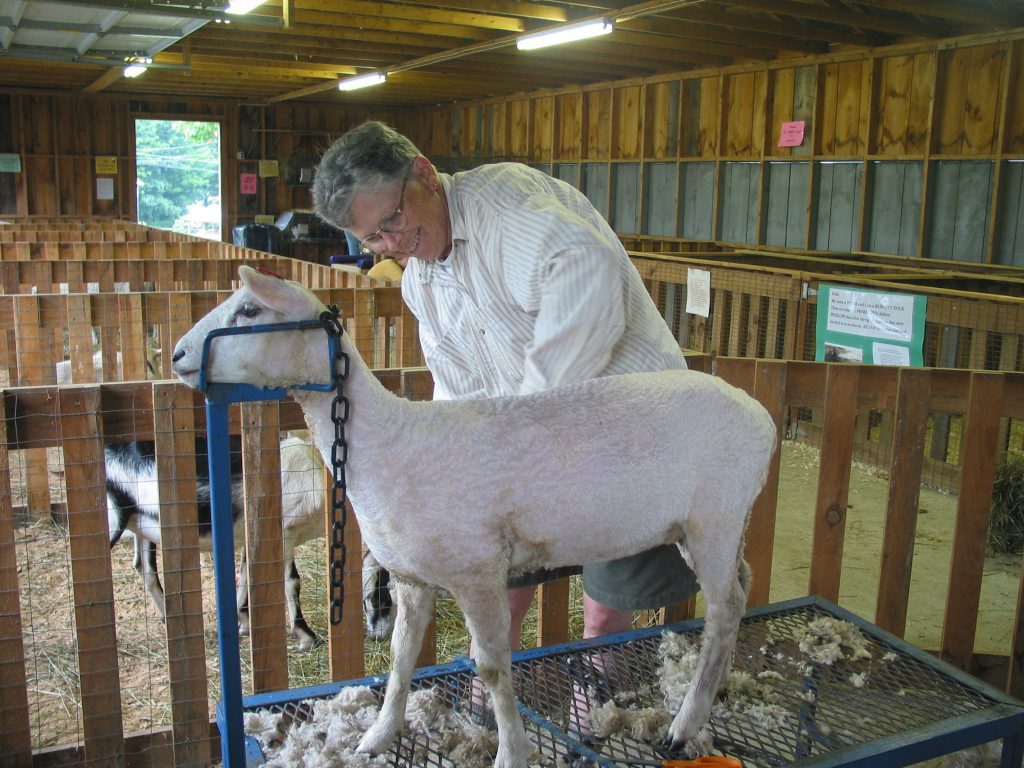
Naming the lambs is fun. We started using names of flowers. We eventually started using the alphabet, which makes it easier to know how old the animal is. In the Tesseract we have a bulletin board with the names of our sheep from the beginning.
We have had pure-bred rams that were Romney, Corriedale, and Border Leicester. We also had a ¾ Finn and ¼ Romney ram. Most first time mothers have only one lamb. In subsequent years ewes usually have twins, except for Finnsheep, which can have up to six babies. The most we have had with the Finnsheep is quadruplets.
Romney
Romney wool is very soft and lustrous; it hangs in separate locks, is high yielding and easily spun. Uniformity of crimp from the butt to the tip of a lock is also typical of the breed.
Border Leicester
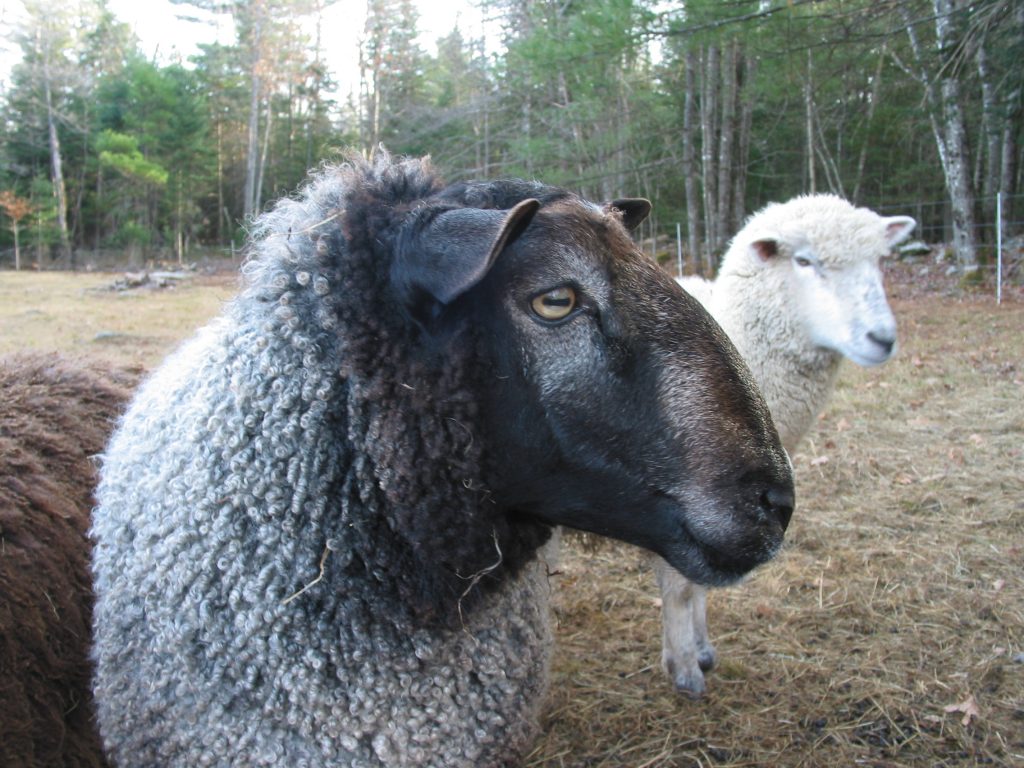
Border Leicester sheep have long and lustrous fleece that falls well. Being a long wool breed sheep, Border Leicester need to be shorn every 8 months or so.
Corriedale
Corriedale wool is very soft with a beautiful luster. Blackberry was a colored pure bred Corriedale ram that sired Alice and Anita. Our 2018 lambs are from Garland, a beautiful big boy who has gone to greener pastures.
Finnsheep
Our Finnsheep crosses have incredibly soft fleece perfect for blending with angora bunny fiber for 25%-30% angora yarn. People like the softness and halo from the angora blend for babies and angora-lined hats. Most of our sheep have some Finn genetics.
Lambing
Lambing time is an exciting and challenging time. It is amazing that ewes know what to do. In most cases, there is no midwife assistance required, though it can be difficult to stand back and wait for nature to do its work. Often the first signs that labor is coming is that the ewe is not interested in grain and hay. Shortly after that, you may begin to see the ewe frequently lying down and alternately standing up, like she cannot quite get comfortable. She paws the ground, picking a spot to have her lambs, which hopefully is a clean area in the barn. You eventually see two little feet and a nose, indicating the position of the lamb is good for an easy birth. Within 10 minutes or so the lamb is born. Soon after birth the lamb will stand and begin to nurse.
Limerick Labs
Our daughter contributes to the farm’s animals with Laborador dogs. Her business, Limerick Laboradors breeds a line of friendly family dogs.
Chickens
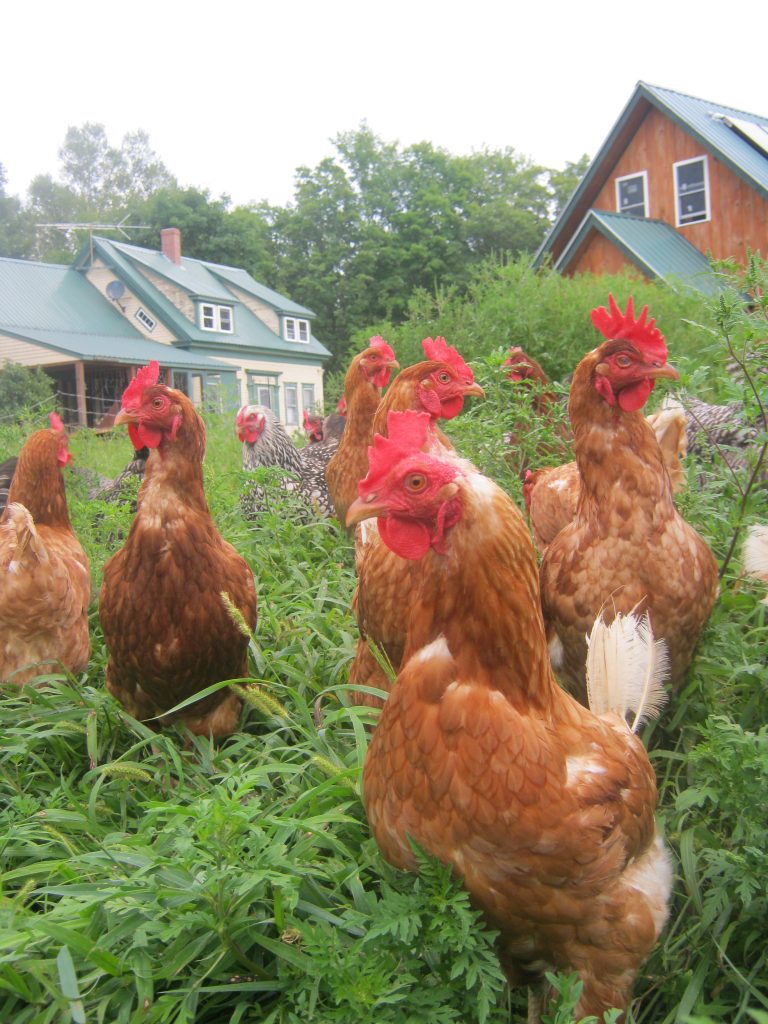
We have a small flock of laying hens that lay huge, tasty eggs. We have enough eggs to feed ourselves, Fare Share Market and a few local customers.
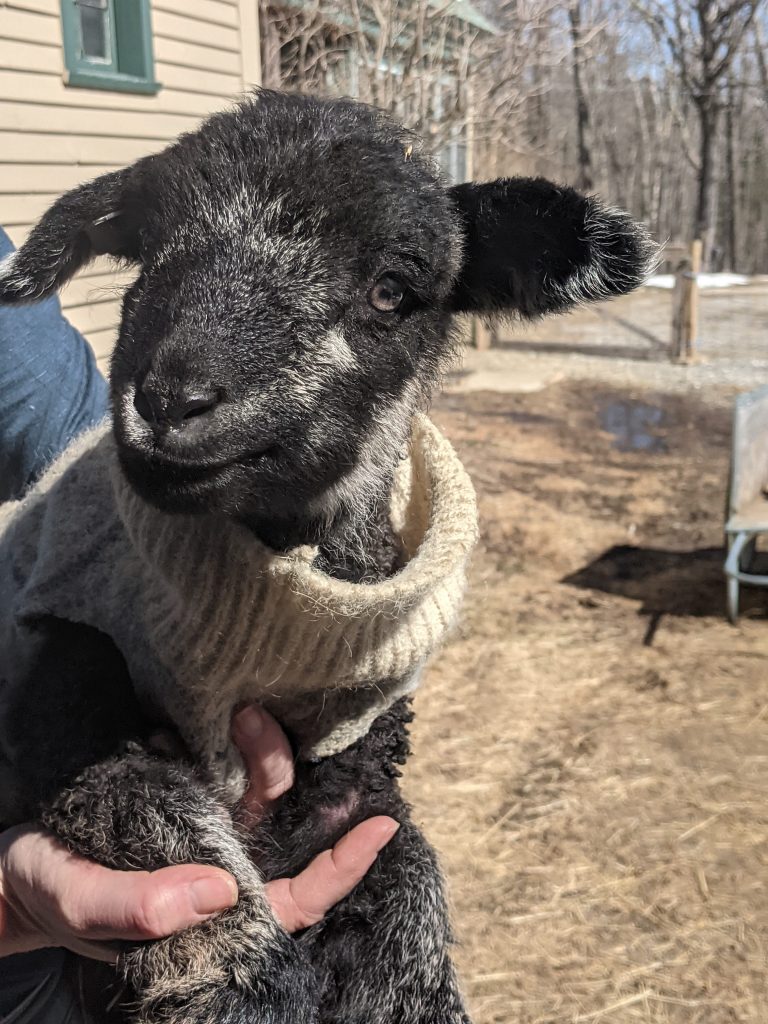
Visit the Farm
